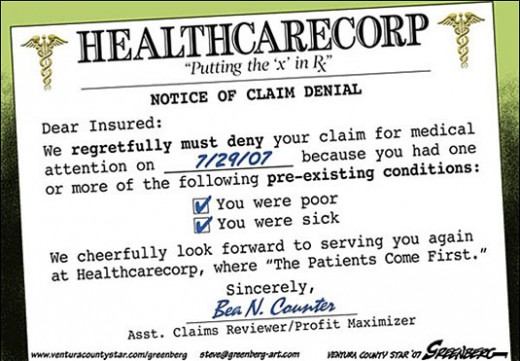Levels of Care in Healthcare

Levels of Care after Injury or Medical Crisis
Utilizing the American healthcare system can be a daunting and anxiety-producing task for many. Not only are friends and family of loved ones requiring a higher level of care for injuries or medical issues that required emergency care in the dark about health insurance and coverage for necessary medical treatment, but connecting the loved one to the appropriate resource at each stage of recovery can be even more complicated. With healthcare reform, cutbacks, and dwindling availability of resources within medical facilities and in the community to guide people through this complicated process that continues to change, evolve and become even more complicated; understanding which type of facility, treatment, or service is appropriate can feel as though it is left to luck.
Navigating the System after Emergency Treatment
Navigating healthcare coverage and insurance plan rules and stipulations is a fulltime job for many American citizens. Understanding which levels of care and medical services are appropriate based on a patient’s current needs and prognosis is also a fulltime job for many American citizens. Family members and patients not only need to understand what the patient needs but they will also need to find the provider that accepts their health insurance coverage. These two tasks combined can leave people feeling as though they need to study the system for 2 years before they can make an informed decision when they are often faced with only 2 weeks to make this important decision—where should their loved one go next? While this is not a blueprint for everyone, this list can be a guide for understanding the different levels of care available. It is important to note that not all patients will require each level. At somes, the patient will access levels out of order if their condition worsens or if they have setback in some way. Also, some patients make faster recoveries and may not require some levels and treatments. Many patients return home after the hospital. It is the patients that cannot return home and the obstacles they face when attempting to access the recommended level of care and services that would benefit from this article.
Acute Medical Treatment in the Hospital
Navigating the healthcare system within the medical inpatient system can be easier than other levels since professionals within a hospital typically move the patient as needed and the appropriate level is often available within the hospital in a separate wing. Recent and ongoing legislation is also requiring medical facilities to “step down” a patient into the least intense level of treatment as soon as warranted.
Many patients after severe injury or medical crisis will move from an intensive care unit after the emergency room treatment. After intensive care or the ICU, the patient may need acute medical treatment within the hospital. Most patients and family members will not be aware of these different levels of care and will only track the change in room and the differences between the levels they notice such as how available the nurses are aides are on their floor.
Acute Medical Rehabilitation
Acute medical rehabilitation programs are located in a hospital. An Acute rehab is under the direction of a physiatrist (a physician specializing in rehabilitation care) who assesses and monitors the patient’s medical and rehab status daily. The physiatrist also provides direction to the team of rehabilitation professionals caring for the patient.
Acute medical rehabilitation programs provide around-the-clock rehabilitative nursing, and you will participate in intensive rehabilitation therapy (physical therapy, occupational therapy, speech-language pathology) up to three hours each day, six days per week.
It is important to note that some individuals due to their condition may not be able to participate in acute rehab due to its intensity. Many patients move from the hospital to subacute rehab and may move up to acute rehab if they are able to tolerate this level of therapy once their condition improves.
Subacute or Postacute Rehabilitation
Sub-acute and Postacute are the same thing and this level is less intense and less comprehensive than acute rehabilitation. It is goal oriented treatment rendered immediately after, or instead of, hospital-based care. Post-Acute Care is intense nursing and rehabilitation for individuals who have been hospitalized and require further nursing care and rehabilitation services. A physician sees the patient one or two times per week typically and usually does not have specialty training in physiatry. This care is provided in a relaxed and comfortable setting with the intent of returning home.
This level of care often scares people because of stigmas they may carry about nursing homes but this is an important phase of care.
Skilled Nursing Facility or Nursing Home
After a serious injury or medical crisis, a patient may be left with deficits that impact their ability to perform activities of daily living independently and require long term care. Nursing homes have come a long way in recent decades and are often rather pleasant and offer a home-like feel.
Home Care
Some patients may be independent enough or may choose to return to their home and obtain home health care services. These services can range from social work, occupational therapy, speech-language pathology, physical therapy, nursing, home heath aides and personal care aides. Each patient may be eligible for a different combination, frequency and intensity of each service based on their specific needs.
The most common services are home health aides and personal care aides. Home health aides have the ability to perform more tasks than a personal care aide although both are directly supervised by a nurse.

Obtaining Medical Coverage
The first step in the process is understanding which level of care is recommended. Medical professionals will need to submit necessary documentation to insurance companies demonstrating that patient has medical need for a specific service/type of facility.
The patient or their loved ones could speak to the hospital's social worker and/or call their insurance company directly to discuss which facilities or agencies provide the next recommended level of care in their area that accept their health insurance coverage. From this list of covered providers, patients and loved ones can determine which choice meets their needs.
If the patient has found themselves without any coverage or coverage limitations, they could attempt to speak to a social worker or benefits coordinator who could discuss which resources are available in the patient's state such as Medicaid, or other state-run insurance programs such as Healthy New York.
Need Advice?
If you are currently faced with attempting to navigate the healthcare system, you may not know where to start.
Free free to send me a message, a comment or ask a question about your specific situation and I will try to give you specific guidance based on your doctor's recommendations and current coverage options.





